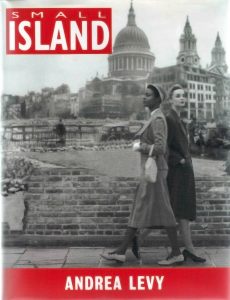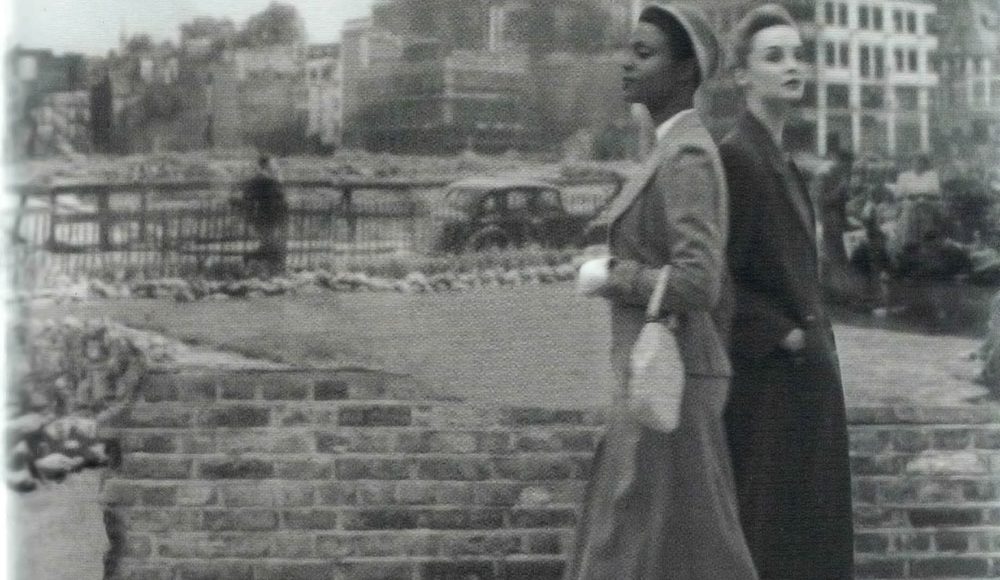Close reading of Small Island
Tessa Roynon
The analysis is of the following paragraph from Andrea Levy’s Small Island (Tinder Press, 2015 edition), p. 55.
No living person should ever see the underside of a tree. The roots – that gnarled, tangled mess of prongs that plummet unruly into the earth in search of sustenance. As I fled from the schoolhouse after the hurricane had passed, the world was upside-down. The fields to my left, to my right, undulated with this black and wretched chaos. Trees ripped from land that had held them fast for years. Branches that should have been seeking light snuffled now in the dirt – their fruit splattered about like gunshot. Tin roofs were on the ground while the squeaking wheels of carts rotated high in the air, disordered and topsy-turvy. I stumbled through this estranged landscape alarmed as a blind man who can now see.
In terms of the novel’s plot, this paragraph describes the teenaged Hortense’s encounter with the chaos and destruction wreaked by the recent hurricane. Emerging from the schoolhouse after the storm, Hortense is traumatised not just by the uprooted trees, roofless houses and overturned houses, but also by having inadvertently witnessed the illicit sexual encounter between Michael and Mrs Ryder that the hurricane and the need to shelter from it had enabled. The turmoil of the landscape mirrors Hortense’s inner turmoil: somewhat obviously, her own world has been turned ‘upside-down’ as she had previously thought that Michael and herself shared a romantic understanding. Her sense of betrayal is matched only by her shock at the disregard for conventional morality and for racial difference that characterise the affair between the older, married, and white American Mrs Ryder and the younger black Jamaican, her cousin Michael.
At the same time, of course, the cataclysmic effects of the hurricane here symbolise Andrea Levy’s concern with the cataclysmic changes involved both in individual lives and in Caribbean and British history during the decades (the 1930s and 1940s) that Small Island as a whole depicts. Indeed, the sense of a world ‘disordered’, ‘topsy-turvy’, and ‘estranged’ epitomises the processes of colonialism and postcolonialism that motor Levy’s entire literary project. As the Jamaican-born cultural theorist Stuart Hall (1932–2014) documents in his posthumous memoir, Familiar Stranger (2017), the middle decades of the twentieth-century were a time of extraordinary upheaval and rapid transition in Jamaica, in the so-called ‘Mother country’ of Britain, and for those on both sides of the encounter between the two.
Jamaica achieved its independence in 1962. Hall describes the combination of ‘the quickening anti-colonial struggle’ with the 1938 labour rebellion in Kingston (also featured in Small Island) as ‘a political hurricane sweeping across the whole region’, one which ‘made the wheels of history turn faster’ (Familiar Stranger 38-39). Inseparable from these political changes, of course, are huge personal upheavals: the crises of belonging and identity that West Indian immigration to Britain from the late 1940s onward set into motion for those of every skin colour and every economic class. When Levy depicts Hortense stumbling through the ravaged landscape ‘alarmed as a blind man who can now see’, it is only the beginning of the protagonist’s intense and discomforting process of re-learning, of coming to terms with her soon-to-be-uprooted self as a ‘gnarled, tangled mess’, and with the fast-evolving worlds around her (Small Island 55).
 There is one further important detail on this page that we should not miss. Just before she describes the deracinated tree, Hortense describes her wish to escape from the barricaded schoolroom in which the tryst is taking place: ‘to burst from the room, to blow through the windows, to blast through the walls, and escape into the embrace of the dependable hurricane’ (55). The violence of the verbs here anticipates the splattered fruit that resembles ‘gunshot’, and express the forceful personal rebellion of this emotionally and sexually intense young woman. The fact that the hurricane is ‘dependable’ as well as devastating ensures the paradox that the cataclysmic change is not all bad: it is at once inevitable, unstoppable and necessary.
There is one further important detail on this page that we should not miss. Just before she describes the deracinated tree, Hortense describes her wish to escape from the barricaded schoolroom in which the tryst is taking place: ‘to burst from the room, to blow through the windows, to blast through the walls, and escape into the embrace of the dependable hurricane’ (55). The violence of the verbs here anticipates the splattered fruit that resembles ‘gunshot’, and express the forceful personal rebellion of this emotionally and sexually intense young woman. The fact that the hurricane is ‘dependable’ as well as devastating ensures the paradox that the cataclysmic change is not all bad: it is at once inevitable, unstoppable and necessary.
This paradox brings to mind the cinematic device in the wonderful documentary of Stuart Hall’s life, The Stuart Hall Project (dir. John Akomfrah 2013). In this film, footage of a Caribbean hurricane, accompanied by powerful music, punctuates every momentous personal and political event that occurs in its subject’s life time. Levy’s focus on the ruptured and unpromising nature of the tree’s roots, furthermore, recalls the famous formulation by the black British intellectual Paul Gilroy about viable postcolonial black identity: it is ‘routes’ (or journeys and paths travelled), rather than ‘roots’ (a futile clinging to often-mythologised origins) that must sustain the black diaspora (The Black Atlantic, 19). In Small Island Hortense learns, albeit the hard way, that to be rootless is an opportunity as well as a loss.
Towards the end of her novel, Levy returns to the concept of ‘hurricane’ and its symbolic potential, and this time she does so with painful but restorative humour. When Hortense has tried to exit from her disastrous teaching interview by walking into the broom cupboard, she finds solace in recounting her experience to Gilbert. Recording a pivotal shift in the dynamics of their relationship, he observes that, after weeping, ‘she blew her nose … with the force of a hurricane’ (459). This conscious incongruity on the part of both Gilbert and Levy – describing an apparently minor event in grand, epic terms – is important because it emphasises Levy’s interest in the significance of apparently-small, incremental changes. The novelist suggests that small-scale evolutions – such as the lessening of hostilities between Gilbert and Hortense – are potentially as significant as major, cataclysmic revolutions. Thus the hurricane, as a recurring motif, expresses a conviction shared by Andrea Levy and Stuart Hall alike: that human experience and human identity are never fixed, but are always in flux and in formation.
~
Works cited
Paul Gilroy, The Black Atlantic: Modernity and Double Consciousness. London and New York: Verso, 1993.
Stuart Hall, Familiar Stranger: A Life Between Two Islands. London: Allen Lane, 2017.
Andrea Levy, Small Island (2004). London: Tinder Press, 2015.
The Stuart Hall Project. Dir. John Akomfrah, 2013.
Cite this: Roynon, Tessa. “Close reading of Small Island.” Postcolonial Writers Make Worlds, 2017, [scf-post-permalink]. Accessed 28 January 2022.
